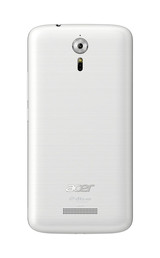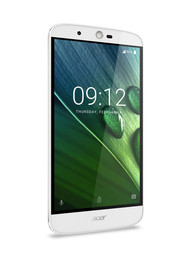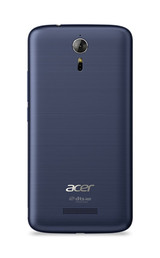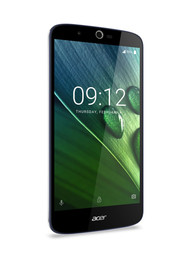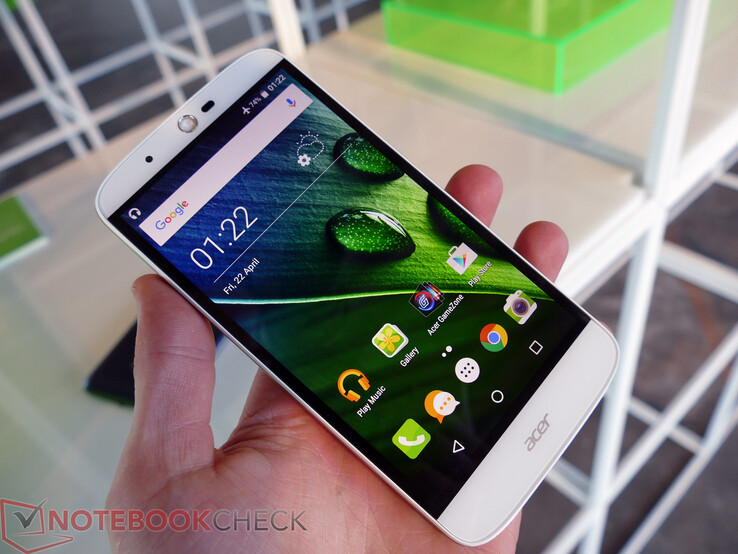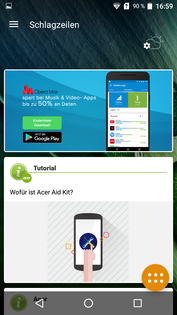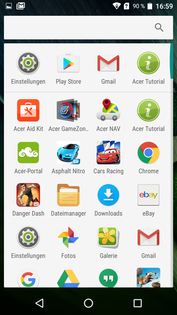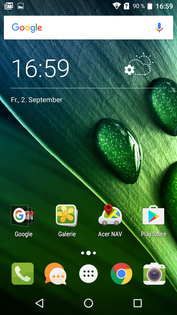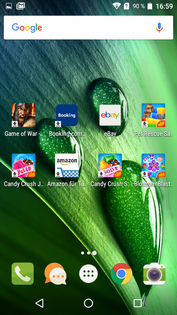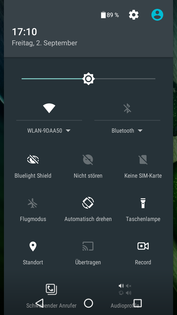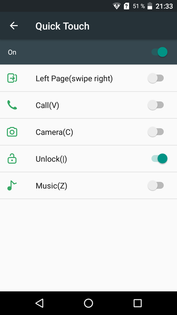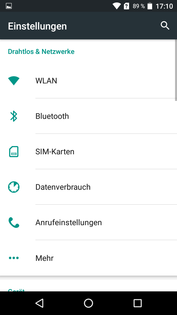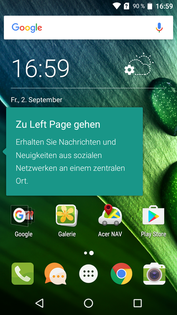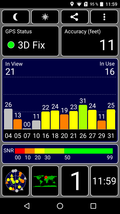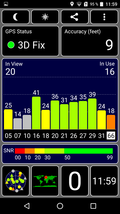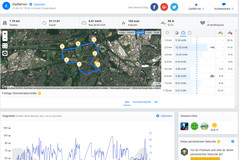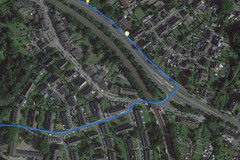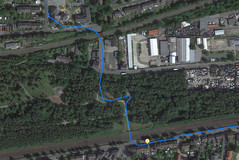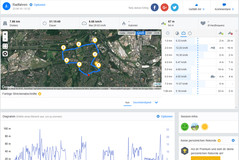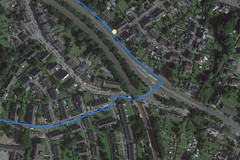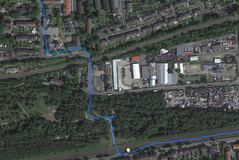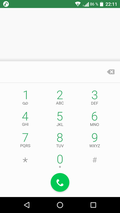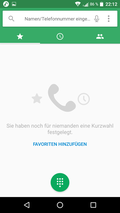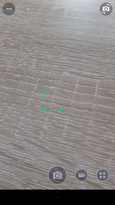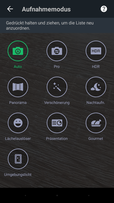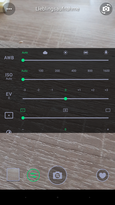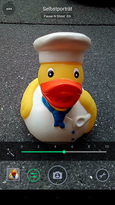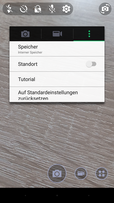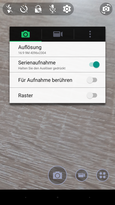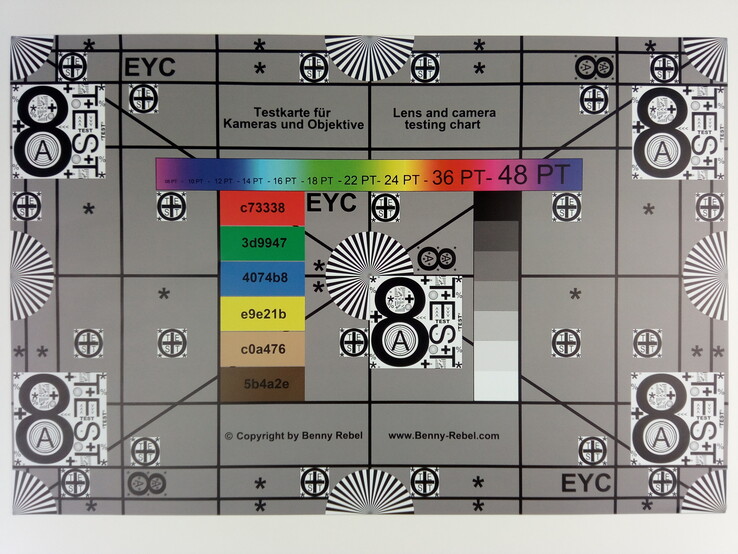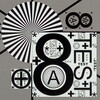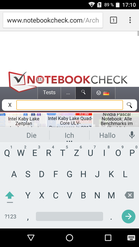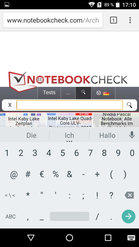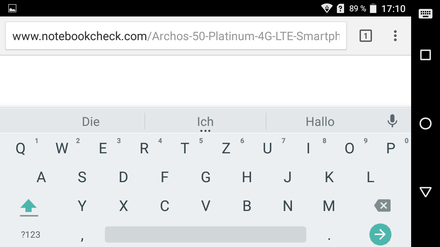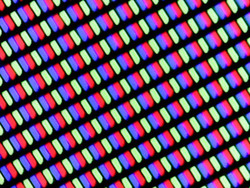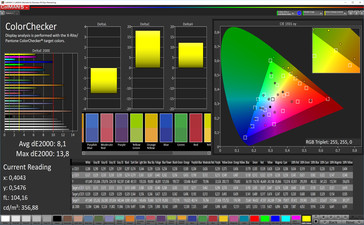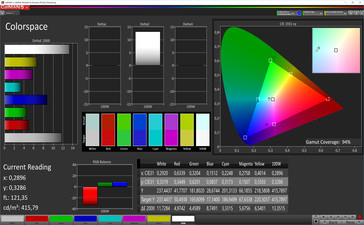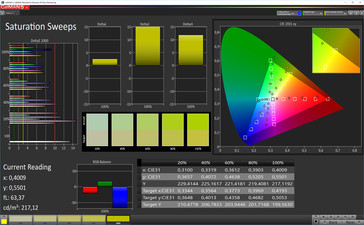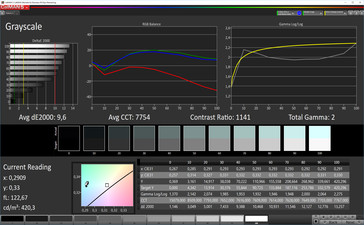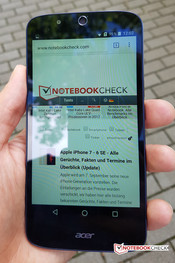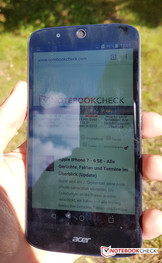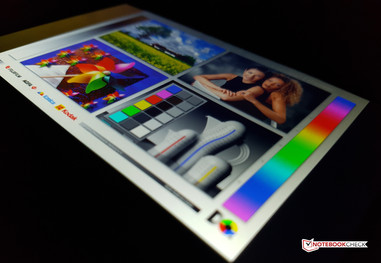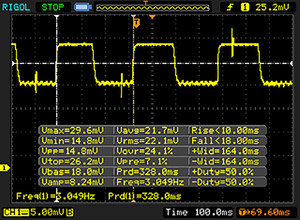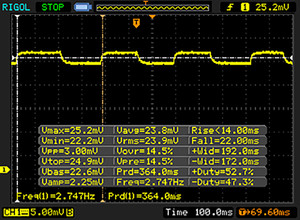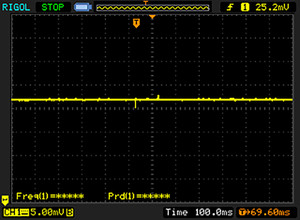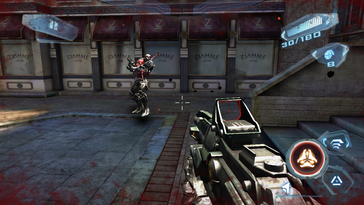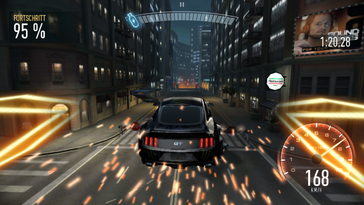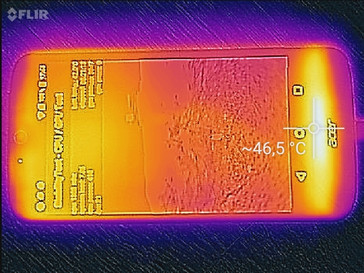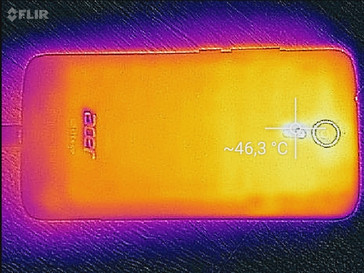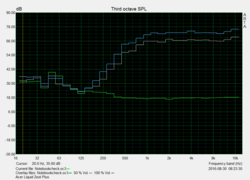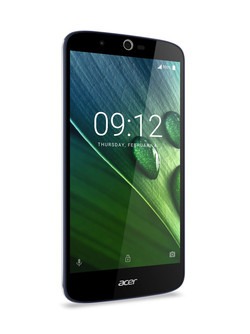Acer Liquid Zest Plus Smartphone Review
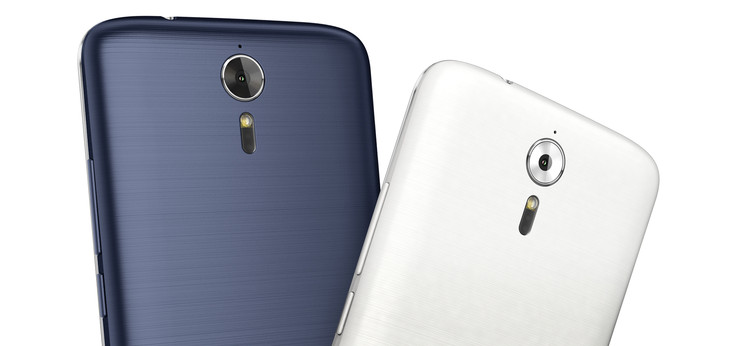
For the original German review, see here.
The Liquid Zest Plus' highlight is its 5000 mAh battery that is to power the mid-range smartphone for up to 3 days according to Acer. Furthermore, DTS-HD Premium Sound that generates virtual surround sound, and an improved headset sound quality is supported. The primary camera has a resolution of 13 megapixels and is furnished with "Tri-Focus" technology. The autofocus system uses laser, phase, and contrast detection for ideally setting the image focus.
Acer's Liquid Zest Plus has a 5.5-inch IPS panel with a resolution of 1280x720 pixels, and it is available in "Moroccan Blue" and "Andes White" for an RRP of just below 200 Euros (~$225). The very similarly equipped Asus ZenFone Max ZC550KL that also has a 5000 mAh battery belongs to Acer's handset direct competition. Beyond that, we list Acer's Liquid Z630S, Leagoo's Shark 1, and Archos' 50 Power as comparison handsets with high-capacity batteries. Samsung's Galaxy S7 Edge flagship smartphone is used as the test reference.
Case
The thin, 9.8-mm (~0.4 in) casing of the Liquid Zest Plus is largely made of plastic that is lightly matted on the back. The back cover that flexes marginally can be removed for expanding the storage via a micro-SD card or accessing the micro-SIM card slots when required. The 5000 mAh battery is, however, non-removable and cannot be replaced.
The Corning Gorilla Glass 3 display fits flush in the casing. At a height of 154 millimeters (~6 in) and a width of 77 millimeters (~3 in), the Liquid Zest Plus' display takes up 69.8% of the casing's front surface.
The plastic volume control and power button on the handset's right feature well-defined pressure points and are easy to reach. The quality of the polycarbonate casing cannot be criticized in view of the price range. The smartphone makes a solid and resistant impression.
Connectivity
The internal eMMC storage in the Liquid Zest Plus has a capacity of 16 GB. Only 10.99 GB are left for the user in delivery state. If memory becomes low, it is possible to move installed applications to an external memory card via App2SD
Further configuration features include an FM radio, Wi-Fi Direct, a compass, and a status LED. A fingerprint scanner is not installed. The micro-USB 2.0 port also supports OTG (on-the-go) for connecting peripherals via an OTG adapter. Wireless transmission of display content to external monitors via Miracast is also supported, and it functioned very well in the test with a Sony Android TV.
Like Asus' ZenFone Max ZC550KL, the 5000 mAh battery acts as a kind of power bank for powering other devices via the micro-USB port.
Software
Acer relies on the sixth Android iteration "Marshmallow" for its Liquid Zest Plus smartphone. The security patch from June 2016 was installed at test time. The user interface in the setting menu and the app drawer do not look very modified compared with Vanilla Android. Acer's proprietary interface, Acer UI, shows subtle, visual modifications in the app and folder design.
Like Acer's Liquid Z630S that we tested, it is possible to let applications, such as notes, calculator, calendar, and calls, float over an opened application. Furthermore, "Quick Touch" gestures can be entered on the screen when it is disabled. An optional read mode reduces blue light emission. Acer also installs a real offline navigation application based on TomTom maps that can be used without mobile Internet access called "AcerNav".
Communication and GPS
The integrated Wi-Fi module in the Liquid Zest Plus only supports the IEEE 802.11 b/g/n standards, typical for this price range. The reception quality is good in everyday use, and the Wi-Fi signal is stable. The attenuation of almost -39 dBm was relatively low nearby the router (Telekom Speedport, W921V). The average data transmission rates to the router (Linksys EA8500) at a distance of one meter (~3 feet) of 50 Mbit/s (transmit) and 48 Mbit/s (receive) are on a common level for entry-level devices.
Bluetooth version 4.0 is onboard for wireless communication between mobile end devices. An NFC chip is not present. Acer's smartphone can access the mobile Internet at up to 150 MB/s (download) and 50 MB/s (upload) using LTE Cat.4. It supports quad-band GSM, quad-band UMTS, and the LTE frequencies 800, 1800, 2100, and 2600 MHz. The dual-SIM handset features two dedicated micro-SIM card slots and an additional micro-SD card slot - both SIM slots support accessing the LTE mobile network.
| Networking | |
| iperf Server (receive) TCP 1 m | |
| Samsung Galaxy S7 Edge | |
| Acer Liquid Zest Plus | |
| iperf Client (transmit) TCP 1 m | |
| Samsung Galaxy S7 Edge | |
| Acer Liquid Zest Plus | |
The GPS satellite network is used for mobile tracking. Localization was possible without much delay with an accuracy of 9 feet, approximately 3 meters, outdoors. A sufficiently strong signal for an accuracy of approximately 4 meters (~13 ft) was generated in the indoor test. Based on our GPS test, a difference of roughly 70 meters (~230 ft) on the almost 8-kilometer (~5-mile) route is observed between the incorporated GPS module in the Liquid Zest Plus and Garmin's Edge 500 professional GPS reference device - a very good rate for an inexpensive mid-range smartphone.
Telephone and Call Quality
Acer uses Google's stock phone app for its mid-range smartphone. It provides the usual features, such as favorites, call list, phone book, and search.
The earpiece's sound and voice quality are satisfactory. The contact is clearly understood thanks to the maximum volume - the same is true for the installed microphone. We performed test calls via Skype and the German Vodafone mobile (D) network.
Cameras
The rear-facing camera module has a native resolution of 13 MP. The photos convince with high-contrast color reproduction in good light conditions. The achieved image sharpness of the autofocus is also satisfactory. Focusing on close objects for macro-photos functions well. The wide aperture of f/1.8 produces bright but also often overexposed photos (scene 1 & 3: graffiti and river). The dynamic range is a bit too low, and the photos consequently tend to look too dark in very different light conditions. The Liquid Zest Plus does a poor job in low-light scenarios (scene 3: street) - hardly any content is visible here.
A 5 MP camera with an f/2.0 aperture is installed on the front of Acer's smartphone. The quality is appealing and suitable for selfies and video telephony. Videos can be recorded in a maximum quality of 1080p at 30 FPS.
Accessories and Warranty
Besides the smartphone, we found instructions, an in-ear headset, USB cable, and an 18-watt modular power supply (2A, 9V) in the review sample's box. A flip cover is available for Acer's Liquid Zest Plus for a recommended retail price of 25 Euros (~$28). In addition to protecting the smartphone, the cover offers useful functions, such as displaying the battery state or current weather, and even the option of taking pictures without having to open the case.
A 24-month warranty is included.
Input Devices and Handling
The capacitive touchscreen made a good impression in the test. Inputs were implemented accurately and without delay. The smartphone is used via Android-typical onscreen buttons. Google's stock Android keyboard is preloaded for text inputting ex-factory.
Display
The 5.5-inch LCD panel furnished with the Zero Air Gap technology has a resolution of 1280x720 pixels. This results in a pixel density of approximately 267 PPI. The resolution provides a sufficient sharpness for everyday use.
The screen's average brightness of 420 cd/m² is on par with our comparison devices, and its illumination of 94 percent is very homogeneous. We determined a similar rate of 418 cd/m² in our measurement of equally distributed bright and dark areas (APL50). The screen achieves a rate of 397 cd/m² when using the adaptive ambient light sensor for controlling the screen's brightness.
| |||||||||||||||||||||||||
Brightness Distribution: 94 %
Center on Battery: 414 cd/m²
Contrast: 1255:1 (Black: 0.33 cd/m²)
ΔE ColorChecker Calman: 8.1 | ∀{0.5-29.43 Ø4.78}
ΔE Greyscale Calman: 9.6 | ∀{0.09-98 Ø5}
Gamma: 2
CCT: 7754 K
| Acer Liquid Zest Plus IPS, 1280x720, 5.5" | Acer Liquid Z630S IPS, 1280x720, 5.5" | Leagoo Shark 1 IPS, 1920x1080, 6" | Asus ZenFone Max ZC550KL IPS, 1280x720, 5.5" | Archos 50 Power IPS, 1280x720, 5" | Samsung Galaxy S7 Edge Super AMOLED, 2560x1440, 5.5" | |
|---|---|---|---|---|---|---|
| Screen | 12% | -26% | 12% | -1% | 51% | |
| Brightness middle (cd/m²) | 414 | 350 -15% | 471 14% | 586 42% | 304 -27% | 554 34% |
| Brightness (cd/m²) | 420 | 345 -18% | 465 11% | 566 35% | 311 -26% | 552 31% |
| Brightness Distribution (%) | 94 | 84 -11% | 82 -13% | 84 -11% | 83 -12% | 96 2% |
| Black Level * (cd/m²) | 0.33 | 0.27 18% | 0.9 -173% | 0.57 -73% | 0.31 6% | |
| Contrast (:1) | 1255 | 1296 3% | 523 -58% | 1028 -18% | 981 -22% | |
| Colorchecker dE 2000 * | 8.1 | 4.7 42% | 7.1 12% | 4.2 48% | 5.9 27% | 1.59 80% |
| Colorchecker dE 2000 max. * | 13.8 | 8.5 38% | 17 -23% | 8.4 39% | 14.3 -4% | 2.56 81% |
| Greyscale dE 2000 * | 9.6 | 5.6 42% | 7.5 22% | 6.3 34% | 4.6 52% | 2.01 79% |
| Gamma | 2 110% | 1.84 120% | 2.23 99% | 2.39 92% | 2.51 88% | 2.01 109% |
| CCT | 7754 84% | 6795 96% | 8261 79% | 6614 98% | 7088 92% | 6321 103% |
| Color Space (Percent of AdobeRGB 1998) (%) | 82.12 | |||||
| Color Space (Percent of sRGB) (%) | 99.98 |
* ... smaller is better
With a black level of 0.33 cd/m² (APL50: 0.32 cd/m²) and maximum brightness of 437 cd/m², the Liquid Zest Plus offers a high-contrast reproduction of contents (contrast ratio: 1255:1). Acer's smartphone exhibits weaknesses in color accuracy and grayscale levels. The aberrations of 8.1 and 9.6 are somewhat high (target rate <3). Furthermore, the grayscales display a visible blue-greenish tint in bright areas.
Display Response Times
| ↔ Response Time Black to White | ||
|---|---|---|
| 28 ms ... rise ↗ and fall ↘ combined | ↗ 10 ms rise | |
| ↘ 18 ms fall | ||
| The screen shows relatively slow response rates in our tests and may be too slow for gamers. In comparison, all tested devices range from 0.1 (minimum) to 240 (maximum) ms. » 70 % of all devices are better. This means that the measured response time is worse than the average of all tested devices (20.2 ms). | ||
| ↔ Response Time 50% Grey to 80% Grey | ||
| 36 ms ... rise ↗ and fall ↘ combined | ↗ 14 ms rise | |
| ↘ 22 ms fall | ||
| The screen shows slow response rates in our tests and will be unsatisfactory for gamers. In comparison, all tested devices range from 0.165 (minimum) to 636 (maximum) ms. » 49 % of all devices are better. This means that the measured response time is worse than the average of all tested devices (31.6 ms). | ||
Screen Flickering / PWM (Pulse-Width Modulation)
| Screen flickering / PWM not detected | |||
In comparison: 53 % of all tested devices do not use PWM to dim the display. If PWM was detected, an average of 8108 (minimum: 5 - maximum: 343500) Hz was measured. | |||
Performance
Acer's Liquid Zest Plus is powered by MediaTek's mid-range ARM SoC (system on a chip) from 2015. The MT6735 is built in 28 nanometers and has four CPU cores based on the 64-bit capable Cortex A53 architecture. In conjunction with 2 GB of RAM, our review sample is on par with the opponents in most benchmarks although it sports a somewhat weaker CPU. However, it cannot compete with the performance of MediaTek's MT6753 in Acer's Liquid Z630S or Leagoo's Shark 1. A similar impression exists in the browser tests as in the benchmark programs.
The performance of the internal 16 GB storage is not particularly fast in sequential read and write, and it lags slightly behind the rivals in the comparison. On the other hand, the access rates in small 4 KB data blocks are in line with the competition. The integrated micro-SD card slot is not the fastest, either. We tested the speed with our Toshiba Exceria Pro M401 reference memory card (max. read: 95 MB/s; write: 80 MB/s). The slot's performance of 28 MB/s (read) and 16 MB/s (write) is rather below average even for an affordable mid-range handset.
| AnTuTu v6 - Total Score (sort by value) | |
| Acer Liquid Zest Plus | |
| Acer Liquid Z630S | |
| Leagoo Shark 1 | |
| Asus ZenFone Max ZC550KL | |
| Archos 50 Power | |
| Samsung Galaxy S7 Edge | |
| GFXBench (DX / GLBenchmark) 2.7 | |
| T-Rex Onscreen (sort by value) | |
| Acer Liquid Zest Plus | |
| Acer Liquid Z630S | |
| Leagoo Shark 1 | |
| Archos 50 Power | |
| Samsung Galaxy S7 Edge | |
| 1920x1080 T-Rex Offscreen (sort by value) | |
| Acer Liquid Zest Plus | |
| Acer Liquid Z630S | |
| Leagoo Shark 1 | |
| Asus ZenFone Max ZC550KL | |
| Archos 50 Power | |
| Samsung Galaxy S7 Edge | |
| GFXBench 3.0 | |
| on screen Manhattan Onscreen OGL (sort by value) | |
| Acer Liquid Zest Plus | |
| Acer Liquid Z630S | |
| Leagoo Shark 1 | |
| Asus ZenFone Max ZC550KL | |
| Archos 50 Power | |
| Samsung Galaxy S7 Edge | |
| 1920x1080 1080p Manhattan Offscreen (sort by value) | |
| Acer Liquid Zest Plus | |
| Acer Liquid Z630S | |
| Leagoo Shark 1 | |
| Asus ZenFone Max ZC550KL | |
| Archos 50 Power | |
| Samsung Galaxy S7 Edge | |
| GFXBench 3.1 | |
| on screen Manhattan ES 3.1 Onscreen (sort by value) | |
| Acer Liquid Zest Plus | |
| Leagoo Shark 1 | |
| Archos 50 Power | |
| Samsung Galaxy S7 Edge | |
| 1920x1080 Manhattan ES 3.1 Offscreen (sort by value) | |
| Acer Liquid Zest Plus | |
| Leagoo Shark 1 | |
| Archos 50 Power | |
| Samsung Galaxy S7 Edge | |
| PCMark for Android - Work performance score (sort by value) | |
| Acer Liquid Zest Plus | |
| Acer Liquid Z630S | |
| Leagoo Shark 1 | |
| Asus ZenFone Max ZC550KL | |
| Archos 50 Power | |
| Samsung Galaxy S7 Edge | |
| Mozilla Kraken 1.1 - Total (sort by value) | |
| Acer Liquid Zest Plus | |
| Acer Liquid Z630S | |
| Leagoo Shark 1 | |
| Asus ZenFone Max ZC550KL | |
| Archos 50 Power | |
| Samsung Galaxy S7 Edge | |
| Octane V2 - Total Score (sort by value) | |
| Acer Liquid Zest Plus | |
| Acer Liquid Z630S | |
| Leagoo Shark 1 | |
| Asus ZenFone Max ZC550KL | |
| Archos 50 Power | |
| Samsung Galaxy S7 Edge | |
| JetStream 1.1 - Total Score (sort by value) | |
| Acer Liquid Zest Plus | |
| Acer Liquid Z630S | |
| Leagoo Shark 1 | |
| Asus ZenFone Max ZC550KL | |
| Archos 50 Power | |
| Samsung Galaxy S7 Edge | |
* ... smaller is better
Games
The ARM Mali-T720 MP2 graphics unit integrated into MediaTek's SoC provides enough GPU power for rendering most games from the Play Store, such as "N.O.V.A. 3" or "Need for Speed No Limits", smoothly. However, "Asphalt 8" cannot be played smoothly in high details since the SoC only manages 24 FPS. Both the touchscreen and position sensors functioned impeccably in the test.
Emissions
Temperature
Acer's Liquid Zest Plus reached a very high maximum temperature of 39.9 °C (103.8 °F) on the front while idling. The temperature development clearly increases during load. We measured a maximum of 45.1 °C (113.2 °F) in the test. Since the back remains much cooler in both idle and load, the high temperatures on the front will not be particularly negative for everyday use.
(-) The maximum temperature on the upper side is 45.1 °C / 113 F, compared to the average of 35.2 °C / 95 F, ranging from 21.9 to 247 °C for the class Smartphone.
(±) The bottom heats up to a maximum of 41.8 °C / 107 F, compared to the average of 34 °C / 93 F
(±) In idle usage, the average temperature for the upper side is 36.5 °C / 98 F, compared to the device average of 32.9 °C / 91 F.
Speaker
The rear-sided mono speaker achieves a maximum volume of 85 dB(A). Its sound quality is on a good level for the price range, and it hardly sounds tinny even when increasing the volume. The Pink Noise measurement clearly illustrates that the mid-range and high tones are relatively linear while low tones below 250 Hz are virtually absent in the sound characteristics.
The playback quality using the 3.5-mm jack alongside DTS-HD Premium Sound is good and also sufficiently loud.
Acer Liquid Zest Plus audio analysis
(+) | speakers can play relatively loud (84.3 dB)
Bass 100 - 315 Hz
(-) | nearly no bass - on average 39.9% lower than median
(±) | linearity of bass is average (8.6% delta to prev. frequency)
Mids 400 - 2000 Hz
(±) | reduced mids - on average 5% lower than median
(+) | mids are linear (6.5% delta to prev. frequency)
Highs 2 - 16 kHz
(+) | balanced highs - only 1% away from median
(+) | highs are linear (1.1% delta to prev. frequency)
Overall 100 - 16.000 Hz
(±) | linearity of overall sound is average (23.5% difference to median)
Compared to same class
» 53% of all tested devices in this class were better, 8% similar, 39% worse
» The best had a delta of 11%, average was 35%, worst was 134%
Compared to all devices tested
» 69% of all tested devices were better, 6% similar, 24% worse
» The best had a delta of 4%, average was 24%, worst was 134%
Acer Liquid Z630S audio analysis
(+) | speakers can play relatively loud (86.4 dB)
Bass 100 - 315 Hz
(-) | nearly no bass - on average 36.8% lower than median
(±) | linearity of bass is average (11% delta to prev. frequency)
Mids 400 - 2000 Hz
(±) | higher mids - on average 5.6% higher than median
(+) | mids are linear (6.1% delta to prev. frequency)
Highs 2 - 16 kHz
(+) | balanced highs - only 3.1% away from median
(+) | highs are linear (1.9% delta to prev. frequency)
Overall 100 - 16.000 Hz
(±) | linearity of overall sound is average (25.4% difference to median)
Compared to same class
» 63% of all tested devices in this class were better, 7% similar, 31% worse
» The best had a delta of 11%, average was 35%, worst was 134%
Compared to all devices tested
» 77% of all tested devices were better, 5% similar, 18% worse
» The best had a delta of 4%, average was 24%, worst was 134%
Asus ZenFone Max ZC550KL audio analysis
(+) | speakers can play relatively loud (85.6 dB)
Bass 100 - 315 Hz
(-) | nearly no bass - on average 40.1% lower than median
(±) | linearity of bass is average (7.5% delta to prev. frequency)
Mids 400 - 2000 Hz
(±) | reduced mids - on average 6.2% lower than median
(±) | linearity of mids is average (12.1% delta to prev. frequency)
Highs 2 - 16 kHz
(±) | higher highs - on average 5.8% higher than median
(+) | highs are linear (4.8% delta to prev. frequency)
Overall 100 - 16.000 Hz
(-) | overall sound is not linear (30.4% difference to median)
Compared to same class
» 79% of all tested devices in this class were better, 4% similar, 18% worse
» The best had a delta of 11%, average was 35%, worst was 134%
Compared to all devices tested
» 88% of all tested devices were better, 3% similar, 9% worse
» The best had a delta of 4%, average was 24%, worst was 134%
Archos 50 Power audio analysis
(+) | speakers can play relatively loud (85.2 dB)
Bass 100 - 315 Hz
(-) | nearly no bass - on average 38.9% lower than median
(±) | linearity of bass is average (8.1% delta to prev. frequency)
Mids 400 - 2000 Hz
(±) | reduced mids - on average 5.4% lower than median
(±) | linearity of mids is average (7.4% delta to prev. frequency)
Highs 2 - 16 kHz
(+) | balanced highs - only 1.4% away from median
(+) | highs are linear (2.1% delta to prev. frequency)
Overall 100 - 16.000 Hz
(±) | linearity of overall sound is average (25.1% difference to median)
Compared to same class
» 61% of all tested devices in this class were better, 7% similar, 32% worse
» The best had a delta of 11%, average was 35%, worst was 134%
Compared to all devices tested
» 76% of all tested devices were better, 5% similar, 19% worse
» The best had a delta of 4%, average was 24%, worst was 134%
Frequency diagram in comparison (check boxes above can be turned on/off!)
Energy Management
Power Consumption
The Liquid Zest Plus consumes considerably less power than our listed comparison handsets with a similar screen size. The maximum load power consumption of 4.49 watts is on a very good level for a 5.5-inch smartphone. This rate was reached using maximum screen brightness and loaded SoC via the Stability Test application.
| Off / Standby | |
| Idle | |
| Load |
|
Key:
min: | |
| Acer Liquid Zest Plus 5000 mAh | Acer Liquid Z630S 4000 mAh | Leagoo Shark 1 6300 mAh | Asus ZenFone Max ZC550KL 5000 mAh | Archos 50 Power 4000 mAh | Samsung Galaxy S7 Edge 3600 mAh | |
|---|---|---|---|---|---|---|
| Power Consumption | -39% | -52% | -26% | -43% | -4% | |
| Idle Minimum * (Watt) | 0.83 | 1.82 -119% | 0.59 29% | 1.15 -39% | 1.66 -100% | 0.63 24% |
| Idle Average * (Watt) | 2.06 | 2.35 -14% | 3.22 -56% | 2.09 -1% | 2.88 -40% | 1.1 47% |
| Idle Maximum * (Watt) | 2.08 | 2.6 -25% | 3.45 -66% | 2.17 -4% | 3.46 -66% | 1.56 25% |
| Load Average * (Watt) | 3.53 | 3.69 -5% | 6.93 -96% | 5.38 -52% | 3.96 -12% | 5.95 -69% |
| Load Maximum * (Watt) | 4.49 | 5.98 -33% | 7.59 -69% | 6.08 -35% | 4.34 3% | 6.7 -49% |
* ... smaller is better
Battery Runtime
Acer's smartphone achieves a good outcome in our Wi-Fi test using an adapted screen brightness of 150 cd/m². However, 13 hours and 35 minutes are a bit disappointing in view of the battery size and good energy management. Asus' ZenFone Max ZC550KL, also with a 5000 mAh battery, manages 2 hours more although its power consumption is slightly higher.
Thanks to the Quick Charge technology, the battery is fully recharged in roughly 2 hours despite the high nominal capacity. Approximately 50 percent are reached in just less than one hour.
| Acer Liquid Zest Plus 5000 mAh | Acer Liquid Z630S 4000 mAh | Leagoo Shark 1 6300 mAh | Asus ZenFone Max ZC550KL 5000 mAh | Archos 50 Power 4000 mAh | Samsung Galaxy S7 Edge 3600 mAh | |
|---|---|---|---|---|---|---|
| Battery runtime | ||||||
| WiFi v1.3 (h) | 13.6 | 11.4 -16% | 9 -34% | 16 18% | 9.9 -27% | 12.2 -10% |
Pros
Cons
Verdict
Acer's Liquid Zest Plus presented itself to us as a decent mid-range smartphone from the lower price level in the test.
Users dependent on a long battery life will find Acer's Liquid Zest Plus to be a good alternative to existing long-running smartphones on the market. Everyone else can find better and higher-quality models, such as ZTE's Blade V7 or Honor's 5C, for a street price of around 200 Euros (~$225).
In particular, the high-contrast IPS panel, the decent music playback quality via speaker and 3.5-mm jack, dual-SIM functionality, and long battery life in the Wi-Fi test have to be highlighted here. The latter is, however, at the expense of performance (weak SoC) and a superior technical configuration (720p resolution vs. 1080p) - both features are actually no longer contemporary for a 200-Euro (~$225), 5.5-inch handset. Furthermore, the plastic casing lacks a bit of quality feel compared with smartphones made of metal or glass.
Acer Liquid Zest Plus
- 09/14/2016 v5.1 (old)
Marcus Herbrich




